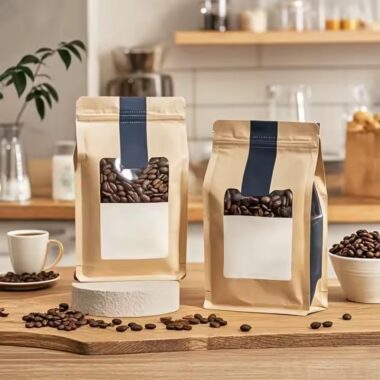Introduction
When sourcing packaging, cost is always a major consideration. For businesses planning wholesale or custom paper pouch orders, understanding what drives costs can help optimize budgets and avoid unexpected expenses. Whether you are working with a paper pouch manufacturer or supplier, breaking down the cost structure ensures transparency and smarter purchasing decisions.
📌 Material Selection and Thickness
The type of material chosen plays the most significant role in cost. Kraft paper is economical and eco-friendly, while laminated or foil-lined structures increase durability but raise expenses. Thicker materials also cost more but provide stronger barrier properties, making them essential for sensitive products like coffee or tea.
📌 Printing and Customization
Custom printing adds value but also influences price. Digital printing may suit small runs, while flexographic and gravure methods are more cost-effective for bulk orders. The number of colors, finish options (matte, glossy, soft-touch), and additional design features such as windows or spot UV all add to the final printing cost.
📌 Order Quantity and Volume Discounts
Larger orders typically benefit from economies of scale. Manufacturers can spread setup costs—like plates and cylinders—across more units, reducing the cost per pouch. Smaller trial orders often have higher unit costs, so buyers should consider future demand when setting quantities.
📌 Additional Functional Features
Optional features such as resealable zippers, tear notches, degassing valves, or handles increase convenience but also raise costs. While these features may add slightly to production expenses, they often improve consumer experience and brand value, which can justify the investment.
📌 Logistics, Shipping, and Lead Time
Packaging is lightweight but still requires careful handling. Freight costs, shipping distance, and delivery speed all affect the total order price. Air freight is faster but more expensive, while sea freight is cost-efficient for large wholesale shipments. Lead time flexibility can help reduce urgent order surcharges.
📌 Quality Control and Compliance
Reliable manufacturers invest in strict quality checks, which add to production cost but reduce risks of defective batches. For food packaging, compliance with safety certifications also influences pricing. Buyers should view these costs as a guarantee of long-term reliability and trustworthiness.
Conclusion
The cost of paper pouch manufacturing is shaped by multiple factors—materials, printing, volume, added features, logistics, and quality assurance. By understanding these elements, businesses can negotiate better, plan budgets more accurately, and work effectively with manufacturers. Choosing the right supplier ensures not only fair pricing but also consistent quality and dependable delivery.

















